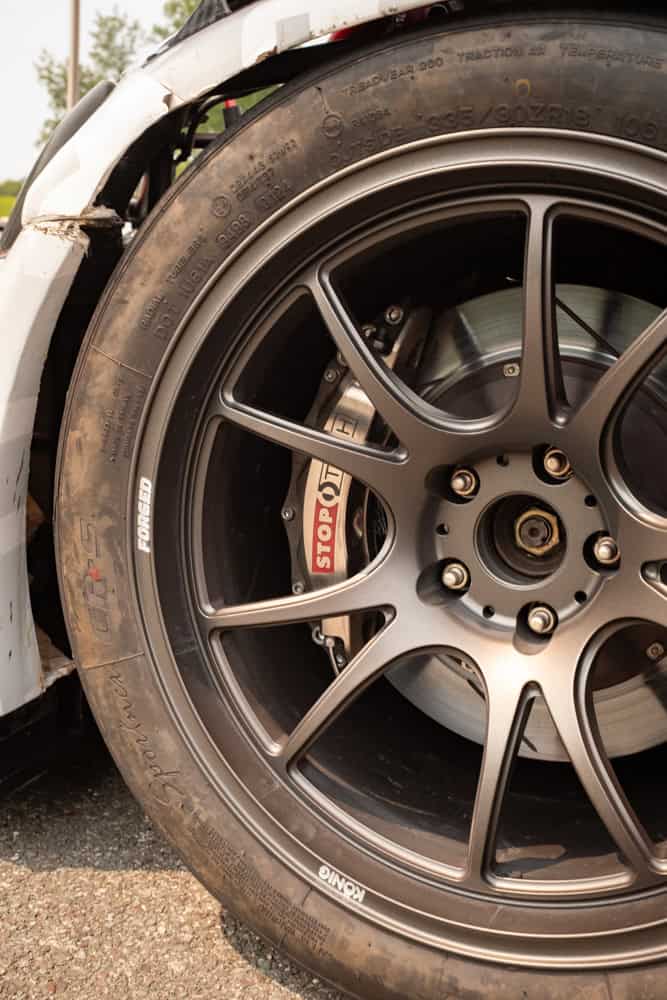Carnatomy Episode: Chris Boersma’s Epic ’99 Honda Civic Build
The latest episode of Carnatomy dives deep into the remarkable build by Chris Boersma, showcasing his 1999 Honda Civic as part of the Boardman Racing Team. Boersma’s Civic is far from stock, boasting cutting-edge performance parts and a powertrain capable of producing over 700 horsepower. A longstanding competitor in Grid Life events, Boersma’s car has become an icon within the Time Attack scene, thanks to its meticulously crafted build and high-powered setup.
Engine & Powertrain: A 700HP Time Attack Monster
Under the hood of Boersma’s ’99 Civic lies a 1.8-liter sleeved block featuring a B18C engine setup. Enhanced by a Garrett G30-900 turbocharger, this powertrain might look intimidating, but Boersma assures it’s simpler than it seems. Sporting Supertech valve trains, custom pistons, and rods by Raymer Racing, the setup is something any dedicated enthusiast could replicate with off-the-shelf components. The engine is also equipped with a TPC Thermal management system and a unity turbo manifold, pushing it beyond 700 horsepower with ease.
Fabrication by Levy Motorsports adds to the car’s extreme capability, including a 3.5-inch titanium exhaust and a four-stage dry sump system. Boersma explained that dry sump technology is crucial for reliability, especially in high-speed environments. The system prevents oil from pooling in the head by using a scavenge stage, ensuring the engine runs smoothly, even under extreme conditions.
The Heart of Control: Sequential Gearbox & Custom Suspension
One of the most exciting new additions to the Civic build is the Quaife sequential gearbox, a game-changer in Time Attack racing. Paired with advanced electronics like Link G4+ ECU for seamless flat-shifting and traction control, Boersma’s setup is as intelligent as it is powerful. The car runs on K-tuned three-way coilovers, featuring digressive valving, and spherically mounted suspension arms, ensuring perfect balance and control on the track.
Konig F3S Forged Wheels: Built for Racing Performance
One of the standout elements of this build is the brand-new Konig F3S forged wheels, custom-designed for performance at the highest level. These 18×12-inch wheels are designed with a +20 offset, allowing Boersma to run wide 335-section Nankang tires. The lightweight yet durable nature of the F3S wheels complements the extreme performance demands of Time Attack racing. Boersma notes how critical wheel performance is, and the F3S delivers both aesthetically and functionally.

Chassis & Aero: A Civic Transformed
Though it may still resemble a Civic at first glance, this machine is equipped with a J’s Racing fiberglass front-end, which includes wider fenders for better aerodynamics and cooling. Levy Motorsports also designed a quick-release nose with a Garrett intercooler and radiator, which can be removed via two pins for easy access—a necessary feature given the car’s high-demand track schedule.
In the rear, a dual-element APR wing and custom diffuser maintain stability at high speeds. The chassis has been heavily modified for safety and performance, including the addition of air jacks for easy servicing during track events.
Boersma’s Racing Journey & Pro Tips
Boersma has owned this Civic since 1999, but its transformation began in 2000. Initially a drag car, Boersma shifted to Time Attack in 2008 and hasn’t looked back since. He emphasizes the importance of taking it slow when getting into motorsports, recommending drivers focus on learning through experience before making extreme upgrades.
Boersma is quick to acknowledge his team and sponsors for helping him keep the car in peak condition. Levy Motorsports, Garrett Turbos, and, of course, Konig Wheels have been essential partners in his racing journey.
Get Connected
This episode of Carnatomy is a thrilling deep dive into what it takes to build a competitive Time Attack car. From the cutting-edge Konig F3S wheels to the impressive engine and suspension setup, Boersma’s Civic stands as a testament to years of dedication and innovation. Follow Chris Boersma and his racing journey on Instagram and Facebook at @BoersmaRacing, and be sure to check out the latest from Konig Wheels to keep up with the best in performance automotive content.
